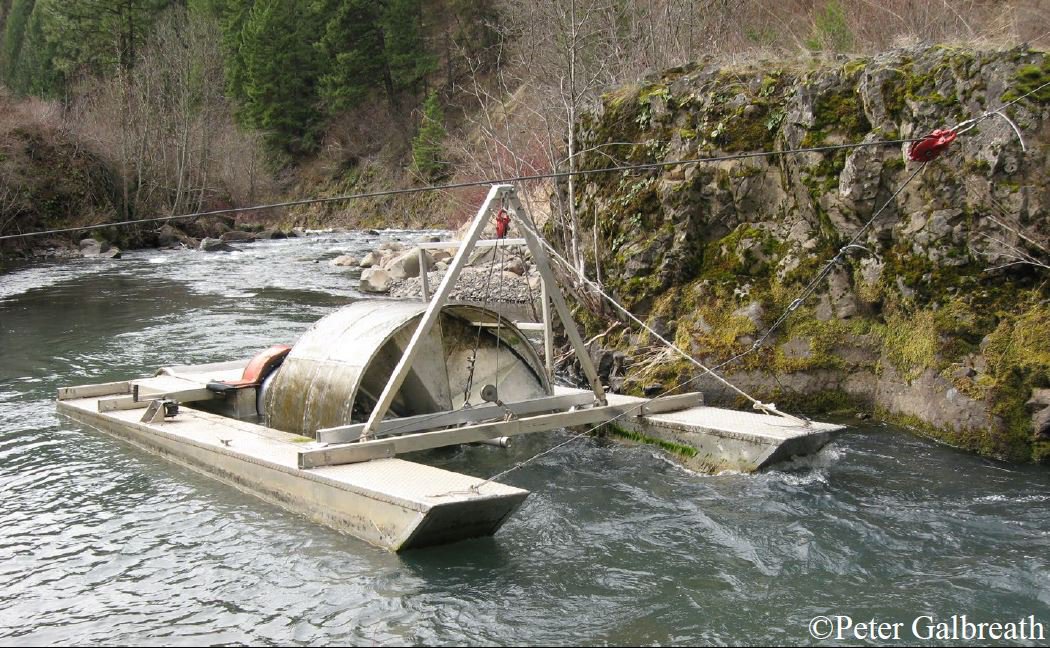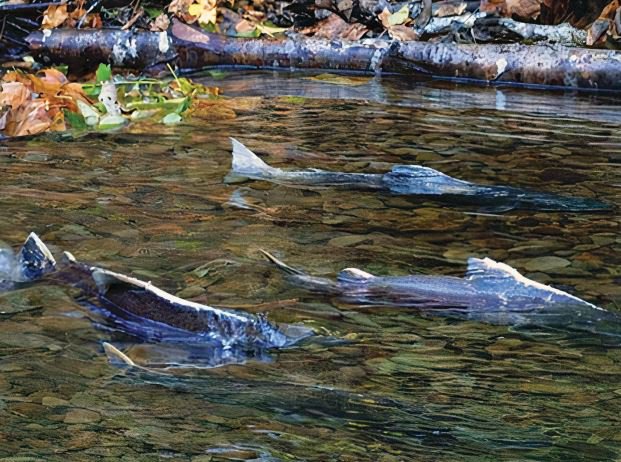Study Demonstrates Hatchery Fish Can Successfully Contribute to Reintroduction and Restoration Efforts
- July 17, 2023
- Maureen Hess

In the Columbia River Basin, where dramatic and extensive alterations to habitat for fish and wildlife have occurred, the Columbia Basin Partnership Taskforce estimated that 35% of historical populations of anadromous salmon and steelhead have been extirpated. Efforts to reintroduce fish populations to areas where they were once abundant generally relies on the help of hatchery fish. Hatchery supplementation and reintroduction programs use hatchery fish to re-establish or increase the naturally reproducing populations in a targeted area with the hope that they retain the adaptive potential to restore and sustain a population.
Scientific studies indicate that because hatchery fish may adapt to their hatchery environment (i.e., domestication), they generally have lower reproductive output than their natural-born counterparts when they return to spawn. The ability of a hatchery stock to successfully adapt to a new location and positively contribute to a reintroduction effort may be impacted by domestication effects associated with hatchery rearing. However, a recent peer-reviewed publication following a reintroduction of Chinook salmon to Lookingglass Creek in Northeast Oregon shows that a hatchery stock can indeed possess the adaptive capacity to positively contribute to natural production and recovery goals.
Hayley Nuetzel, Fishery Scientist with the Columbia River Inter-Tribal Fish Commission, in collaboration with scientists with the Confederated Tribes of the Umatilla Indian Reservation, presented these results to the Council’s Fish and Wildlife Committee at its July 2023 meeting.

Declines of the native population of spring Chinook salmon in Lookingglass Creek occurred throughout the late 1900s. Under the federally mandated Lower Snake River Compensation Plan, Lookingglass Hatchery was built in 1982 to mitigate these losses and impacts to fish associated with the construction and operation of the four lower Snake River Dams. The native population in Lookingglass Creek was nearly gone, and a reintroduction program was initiated in 2000 with a hatchery stock from an adjacent location (Catherine Creek) within the same river basin (Grande Ronde). As the first hatchery-produced adults returned to Lookingglass Creek three to five years later, some were collected for producing and creating a local hatchery broodstock. Most of the fish were passed upstream of the trap to continue their migration to spawn naturally, thereby initiating the reintroduction of spring Chinook salmon to the upper reaches of Lookingglass Creek.
The Confederated Tribes of the Umatilla Indian Reservation and the Oregon Department of Fish and Wildlife operate, monitor and evaluate the hatchery program. Nuetzel’s project is an added resource of funding that helps lend research, monitoring and evaluation support to tribally-managed supplementation and reintroduction programs for salmon and steelhead throughout the Columbia River Basin. Non-lethal collection of fin tissue samples from returning adults and outmigrating juveniles allowed for tracking family pedigrees using genetic analyses to understand how hatchery and natural produced fish were contributing to the subsequent generations of spring Chinook in Lookingglass Creek. Nuetzel’s team found that the natural-origin fish, originally derived from the captive broodstock hatchery program, demonstrated higher reproductive success (i.e., produced more offspring) than their hatchery born counterparts.

Results from the study demonstrate that hatchery stocks have the capacity to naturalize to a reintroduced system, as well as to supplement low existing populations, thus contributing toward both mitigation and restoration goals.
These types of studies are an important component of the Council’s Columbia River Basin Fish and Wildlife Program (Fish and Wildlife Program). Research, monitoring and evaluation are essential tools for adaptive management and assessment of how the Fish and Wildlife Program is working toward mitigation objectives and achieving benefits for fish, wildlife, and their habitat. With the Fish and Wildlife Program supporting several reintroduction and supplementation efforts across the Columbia River Basin, this research is invaluable to informing management of hatchery programs that both serve a mitigation purpose and act as conservation tools.
Read more:



